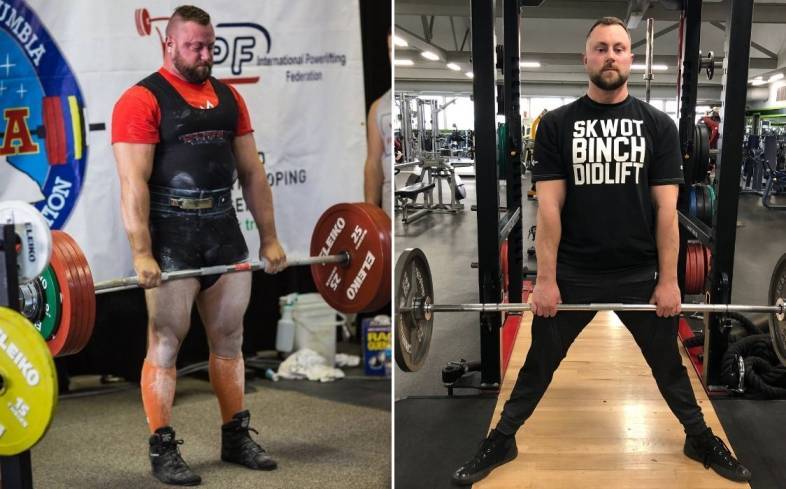Let’s talk deadlifts. This is one of those topics our community cares most about, and that’s no surprise. As one of the big three, it’s a monumental challenge. It’s also (by far) the most requested topic from last week’s poll.
In this newsletter, we’ll share a method for increasing your deadlift strength. We’ll also share our favorite resources and learn where you stand on powerlifting competitions.
This Week’s Resources
Pursuit of Strength (Use the code PLT40 for a discount)
We’d love to hear about your powerlifting journey. Are you a competitor?
Have you competed in a powerlifting competition?
Our Method for Increasing Deadlift
Increasing your deadlift will take a combination of choosing the right deadlift style (i.e. conventional vs sumo), improving technique, and appropriate training programming to increase performance.
Improving technique is the first and most important aspect of increasing your deadlift.
Good technique will also minimize your chances of injury, hindering your progress to increasing your deadlift and maximizing your work capacity for training programming.
For the first step, you’ll need to choose your style.
Sumo vs. Conventional Deadlift
There are three main differences between conventional and sumo deadlifts:
Start Position: Conventional deadlifts use 5-10% more forward lean with shoulders slightly in front of the bar, while in sumo deadlifts, shoulders should align directly over the bar. It would be counterproductive to use a forward lean for sumo deadlifts.
Range of Motion: Sumo deadlifts have a 20-25% shorter range of motion than conventional deadlifts. Your feet are wider, so you don't need to lift the bar as high, leading to less mechanical work needed for sumo. This makes the sumo deadlift better if you have lower back issues.
Muscles Used: Conventional deadlifts use more lower back muscles (spinal erectors) and glutes, while sumo deadlifts emphasize the quads more. A study by Escamilla et al. (2002) found the sumo deadlift also significantly engages the vastus medialis and vastus lateralis (specific quad muscles), and the tibialis anterior (front of shin), reflecting the different muscle activation patterns between the two styles.
Which Should You Use?
Lighter lifters less than 204 lbs (93kg) for men and less than 138 lbs (63kg) for women will prefer to deadlift in a sumo stance, and heavier lifters will prefer to deadlift in a conventional stance.
Next, you’ll want to focus on weak points in your technique.
We’re writing today’s newsletter on deadlift technique because that’s what you asked for over the past few weeks. If you’re finding it helpful, please share it!
Weak Points in the Range of Motion
Most people will have a sticking point in the deadlift, whether it’s just off the floor, at the knees, or at lockout.
If the rest of your technique is good, but you have one of these weak points, you should consider training a partial range of motion with block deadlifts, doing paused deadlifts, or doing tempo deadlifts by lowering the bar to the floor to a count of 3 or 5 seconds.
The next step may change the way you think about deadlifts.
What do you need help with?
Cue “Push The Floor Away”
Even if you have a solid start position and good posture in the deadlift, a poor mental cue can make the weight feel heavier than it is. It can also cause technique problems if you think about executing the deadlift in a less-than-optimal way.
A common problem is that lifters think about the deadlift too much like a pull. Subsequent deadlift problems that this can cause are hips rising too soon, pulling your shoulders behind the bar, and underusing the quads to push off the floor.
The deadlift extends the hips and the knees, not just the hips. If you want to lift heavier, a good cue such as “pushing the floor away” is an excellent way to engage the quads, glutes, and hamstrings altogether.
Soft-soled trainers can help with this cue by bringing your feet closer to the ground and enabling you to ‘feel’ the ground more easily.
And those are just the first three steps. Read my full deadlift strengthening guide for steps 4-7.
Sample Workouts for Deadlift Strengthening
My guide also includes sample workouts, available completely free. Here’s one for novice powerlifters. Note that you can find your 1RM with our calculator.
Monday
Deadlift – 3×6 @ 60% 1RM
Lat Pulldown – 3×10, leaving 3 to 6 reps in reserve
Barbell Row – 3×10, leaving 3 to 6 reps in reserve
Wednesday
Deadlift – 3×6 @ 60% 1RM
Hamstring Curls – 3×10, leaving 2 to 4 reps in reserve
Glute Bridges – 3×12 @ bodyweight
Friday
Deadlift – 3×6 @ 60% 1RM
Squat – 3×6 @ 60% 1RM
Plank – 3×30 seconds
Side Plank – 3×20 seconds
Did someone forward you this email? You can sign up for free to get them directly in your inbox.



